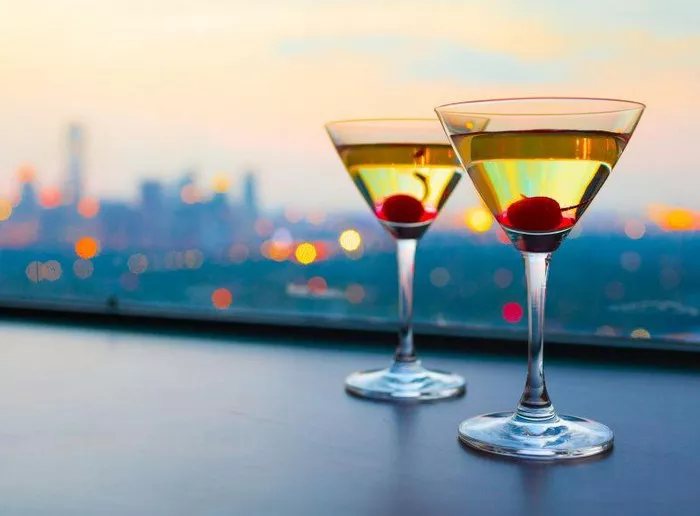In the realm of mixology, the term “strong cocktail” doesn’t merely allude to a beverage’s alcoholic punch. Instead, it encapsulates a harmonious blend of flavors, carefully curated to deliver an experience that goes beyond mere intoxication. From classics like the robust Manhattan to innovative creations pushing the boundaries of taste, the world of strong cocktails is a fusion of artistry and scientific precision.
Defining a Strong Cocktail: Beyond Alcohol Content
At its core, understanding what constitutes a strong cocktail requires a multifaceted perspective. While alcohol content plays a pivotal role, it’s not the sole determinant. A strong cocktail isn’t merely about high-proof spirits; it’s about achieving a delicate equilibrium between various elements—alcohol, mixers, modifiers, and aromatics.
Conventionally, a strong cocktail contains a higher ratio of alcohol to other components, packing a potent punch. Cocktails like the classic Martini or Old Fashioned embody this principle, where spirits take center stage. However, achieving strength in a cocktail isn’t solely about overpowering alcohol; it’s about crafting a balance where each ingredient complements and enhances the overall flavor profile.
The Anatomy of Strength: Understanding Alcohol by Volume (ABV) and Proof
Alcohol content is quantified by Alcohol by Volume (ABV) or proof, reflecting the concentration of ethanol in a beverage. One must decipher these measurements to comprehend a drink’s potency fully.
In the United States, proof is twice the ABV. For instance, a spirit with 40% ABV equals 80 proof. High-proof spirits like overproof rum or cask-strength whiskey, exceeding the standard 40-50% ABV, are often used as a base in strong cocktails. However, it’s crucial to wield these robust spirits judiciously to maintain balance.
The Balancing Act: Crafting Strong Cocktails with Precision
Mixology isn’t just about pouring spirits together; it’s an intricate art form that demands precision and expertise. Achieving a strong cocktail requires a meticulous understanding of ratios, flavor profiles, and the interplay between ingredients.
The foundation of a strong cocktail often rests upon a base spirit, which sets the tone for the drink. Bartenders meticulously pair these potent spirits with complementary modifiers and mixers to enhance flavors without overshadowing the alcohol. For example, in a Negroni, the bitterness of Campari and sweetness of vermouth harmonize with the strength of gin, creating a well-balanced, potent concoction.
Innovations in Potent Mixology: Pushing Boundaries
The landscape of strong cocktails is continually evolving, with mixologists pushing the boundaries of creativity and flavor. Innovative techniques, unique ingredients, and unconventional combinations redefine what a strong cocktail can be.
One such trend is the infusion of smoke or unique flavors through techniques like barrel aging or using smoked elements like wood chips or dried herbs. These methods impart depth and complexity to cocktails like the Smoked Whiskey Sour or the Barrel-Aged Negroni, elevating their strength and flavor profile simultaneously.
The Role of Dilution and Temperature: Fine-Tuning Strength
Dilution and temperature are often underestimated yet critical aspects of creating strong cocktails. Dilution, primarily through ice, not only chills the drink but also impacts its strength by tempering the intensity of high-proof spirits. As ice melts, it subtly alters the drink’s composition, mellowing its potency while enhancing its overall drinkability.
Temperature also plays a crucial role in the perception of strength. A well-chilled cocktail tends to mask the alcohol’s bite, allowing other flavors to shine through. Conversely, a warm drink might accentuate the potency, altering the drinking experience significantly.
The Psychology of Strong Cocktails: Perception and Enjoyment
Perception significantly influences the enjoyment of strong cocktails. Factors like presentation, glassware, and even the ambiance of the serving environment contribute to how a drink is perceived and savored.
Aesthetically pleasing presentation in elegant glassware often enhances the experience, influencing the perception of a cocktail’s strength. Moreover, the ambiance of a bar or setting can impact the way individuals appreciate and consume strong cocktails, altering their perceived potency.
Responsibility in Enjoying Strong Cocktails: A Call for Moderation
While indulging in strong cocktails can be a delightful experience, responsible consumption is paramount. The allure of potent drinks should always be accompanied by mindfulness and moderation. Understanding personal limits, savoring rather than consuming hastily, and prioritizing safety are crucial aspects of enjoying strong cocktails responsibly.
Conclusion: The Artistry and Complexity of Strength in Mixology
In conclusion, the concept of a strong cocktail surpasses mere alcohol content; it embodies a harmonious fusion of ingredients, techniques, and creativity. Crafting a strong cocktail is an intricate dance of flavors, where the potency of alcohol converges with the subtlety of mixers, modifiers, and aromatics. Understanding, appreciating, and enjoying the complexity of a strong cocktail not only showcases the artistry of mixology but also demands a responsible and mindful approach towards consumption.


